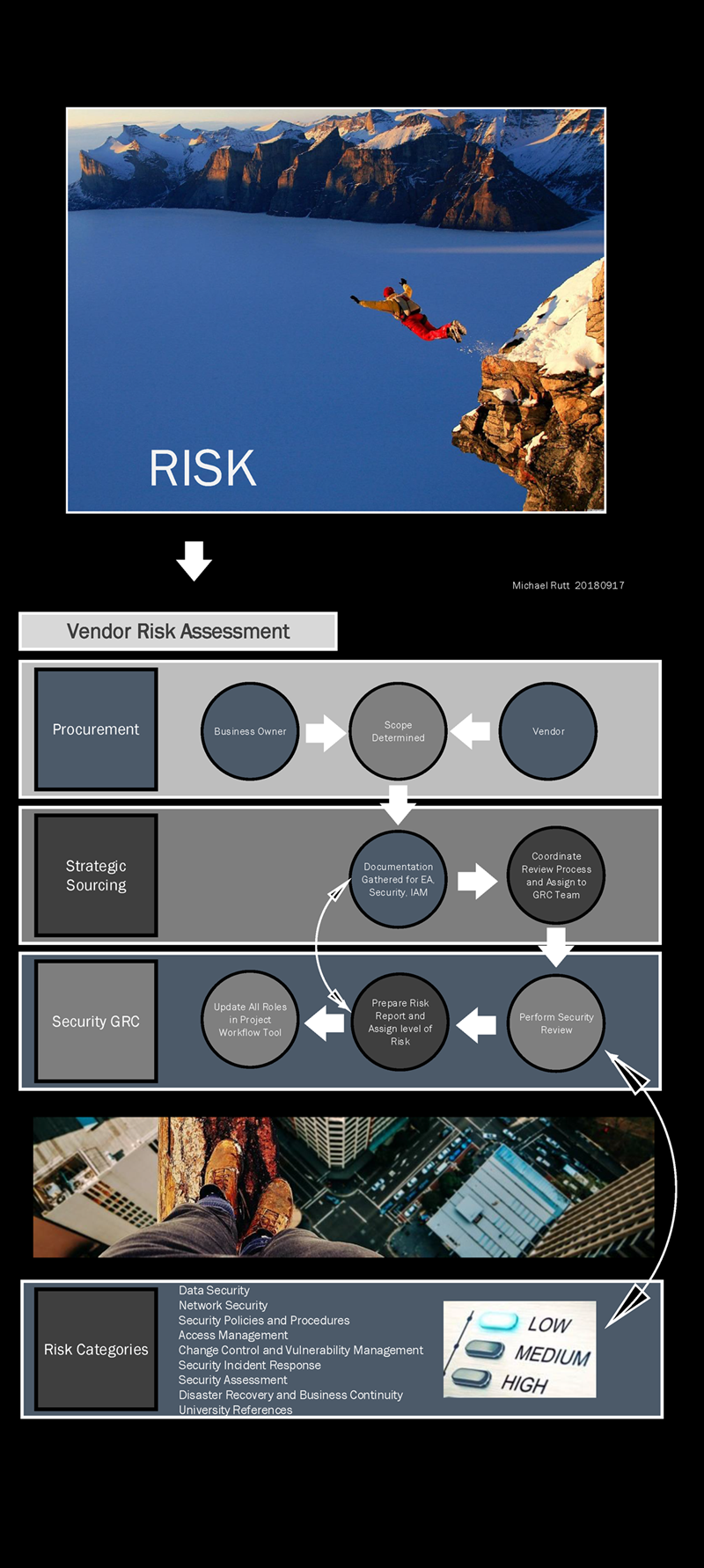Risk management is the identification, evaluation, and prioritization of risks (defined in ISO 31000 as the effect of uncertainty on objectives) followed by coordinated and economical application of resources to minimize, monitor, and control the probability or impact of unfortunate events or to maximize the realization of opportunities.
Risks can come from various sources including uncertainty in financial markets, threats from project failures (at any phase in design, development, production, or sustainment life-cycles), legal liabilities, credit risk, accidents, natural causes and disasters, deliberate attack from an adversary, or events of uncertain or unpredictable root-cause. There are two types of events i.e. negative events can be classified as risks while positive events are classified as opportunities. Several risk management standards have been developed including the Project Management Institute, the National Institute of Standards and Technology, actuarial societies, and ISO standards. Methods, definitions and goals vary widely according to whether the risk management method is in the context of project management, security, engineering, industrial processes, financial portfolios, actuarial assessments, or public health and safety.
Strategies to manage threats (uncertainties with negative consequences) typically include avoiding the threat, reducing the negative effect or probability of the threat, transferring all or part of the threat to another party, and even retaining some or all of the potential or actual consequences of a particular threat, and the opposites for opportunities (uncertain future states with benefits).
https://en.wikipedia.org/wiki/Risk_management
Vendor risk assessment is an important part of evaluating the security posture of a prospective software solution for your company. It's important to cover the security details that might be missed if you don't do a full security review. Some of the major security categories include data security, network security, security policies, access management, change control, vulnerability management, security incident response, security assessment, disaster recovery, business continuity and references.
Below is a presentation created to show how the flow of information happens for vendor risk assessments.
